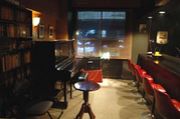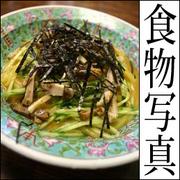Kyoto Experience
You may feel thrilled to find yourself standing in the midst of this amphitheater-like environment, though it is actually a basin. You are comfortably trapped within such mountains, or hills in your Western sense. You would be in a state of reverie to be enveloped in this small, but complete microcosm. For, you always find those mountains in all directions except Southward. Geo-morphologically Kyoto is a town developed in a valley, with two rivers, and smooth mountains in three directions, North, East, and West. The natural alignment is ideal for a metropolis, according to ancient divinity in China, saying that a legendary huge dragon’s breath is blown from North to South to protect the city.
Kyoto has not spontaneously been emerged, but was built with a strong-willed policy of the Emperor Kammu in the year of A.D. 794. The powerful dictator, Kammu, well known with this capital relocation from Nara to Kyoto, and conquest of Tohoku (Northern part of Japan), which took more than twenty years, tried to construct the city just like Cho-an, a capital city of China at that time. In the basin he built an almost square shaped town of about three miles each. All the streets and avenues are laid out like a chessboard, as Manhattan in New York City. Both addresses exactly show locations where you are. “Seventh Avenue, 42nd Street.”, and, “Marutamachi-Dori, Sembon, Agaru” .Those expressions are so clear that you quickly get an idea on the place without a map. Only the difference is the last word “Agaru”, that is a verb in Japanese, meaning “to go up”. In this case, the place is located at a few buildings north from the intersection of Marutamachi Street and Sembon Avenue. Thus you literally climb up, walking uphill. Because even the flat land in the city there is slight uphill slope from south to north, same as the direction of the river flow.
People in Kyoto, let me call Kyoto natives as Kyotoean, seems to know how to enjoy life. One evening of late summer they write a huge Japanese letter called “DAI”, or “big” on the mountain. The size of the letter is about thirty feet. How do Kyotoeans write this letter? And why? People in charge make a group of five or so persons, and each group do a sort of a campfire, allocating the letter “DAI”. You can enjoy watching the letter DAI emblazing for about thirty minutes. Everybody in the city can see the fire. This is a sort of reversed utilization of an amphitheater. The flat bottom serves a stage for Greek players. Here people see the blazing performance on the hillside. It’s one of good ways for Kyotoean to pass the night, evading thick, heavy, and subdued atmosphere of late August. The significance of this funny and superficially stupid event has yet a religious origin. The particular period of August 13 to 15, we have an annual event relating ancient religious tradition, called “O-Bon”. During the season, it is believed that the Spirits of their ancestors return home from the land of the dead. On the night of the last day, August 15, Kyotoean says “good-bye” with such fires to the Spirits who are going back again to another world.
An amphitheater-like landscape gives fundamental contribution in garden design. Garden is extremely important for Buddhist temples. It represents their ultimate world. Main difference in garden construction between Japan and Western is in “multi-viewpoints” here, whereas Western garden has a single and stable viewpoint. You will see its typical example in the garden at Ginkaku-ji temple where they have a garden so called “Kairo”, or “Corridor”. In front of the main building there is a pond. You walk along with it, watching the water, enjoying to be surrounded with sereneness of green. As you circle around the pond, you find a small pathway leading to the mountains. Now, the perspective is gradually heightened, as you climb up the hill, and finally you obtain the entire landscape of not only the garden itself, but also distant prospect of the city. It’s a transformation from a planar world to three-dimensional sceneries. And, you suddenly notice that the mountain you climbed up belongs to the garden. To exhibit the garden in this scheme is called “Shyakkei”, or “Borrowed Scenery”. Now you would imagine about the very idea of the designer. He tried to demonstrate as if the garden might include the natural mountains, or the mountains might be part of the garden. The Ethos of this is that man belongs to Nature, or man wishes to be part of Nature. Perhaps it may not be Rousseau’s “Return to Nature”, but certainly corresponds to Zen’s negation of “I”.
Well, I may have gone too far, though I only tried to give you a hint about how you feel to be in Kyoto. There are so many aspects in this unique historic city. I hope you to join to get a feeling of “Kyoto state of mind”.
Jazzmass K’s Case
Where the music prevails
You may feel thrilled to find yourself standing in the midst of this amphitheater-like environment, though it is actually a basin. You are comfortably trapped within such mountains, or hills in your Western sense. You would be in a state of reverie to be enveloped in this small, but complete microcosm. For, you always find those mountains in all directions except Southward. Geo-morphologically Kyoto is a town developed in a valley, with two rivers, and smooth mountains in three directions, North, East, and West. The natural alignment is ideal for a metropolis, according to ancient divinity in China, saying that a legendary huge dragon’s breath is blown from North to South to protect the city.
Kyoto has not spontaneously been emerged, but was built with a strong-willed policy of the Emperor Kammu in the year of A.D. 794. The powerful dictator, Kammu, well known with this capital relocation from Nara to Kyoto, and conquest of Tohoku (Northern part of Japan), which took more than twenty years, tried to construct the city just like Cho-an, a capital city of China at that time. In the basin he built an almost square shaped town of about three miles each. All the streets and avenues are laid out like a chessboard, as Manhattan in New York City. Both addresses exactly show locations where you are. “Seventh Avenue, 42nd Street.”, and, “Marutamachi-Dori, Sembon, Agaru” .Those expressions are so clear that you quickly get an idea on the place without a map. Only the difference is the last word “Agaru”, that is a verb in Japanese, meaning “to go up”. In this case, the place is located at a few buildings north from the intersection of Marutamachi Street and Sembon Avenue. Thus you literally climb up, walking uphill. Because even the flat land in the city there is slight uphill slope from south to north, same as the direction of the river flow.
People in Kyoto, let me call Kyoto natives as Kyotoean, seems to know how to enjoy life. One evening of late summer they write a huge Japanese letter called “DAI”, or “big” on the mountain. The size of the letter is about thirty feet. How do Kyotoeans write this letter? And why? People in charge make a group of five or so persons, and each group do a sort of a campfire, allocating the letter “DAI”. You can enjoy watching the letter DAI emblazing for about thirty minutes. Everybody in the city can see the fire. This is a sort of reversed utilization of an amphitheater. The flat bottom serves a stage for Greek players. Here people see the blazing performance on the hillside. It’s one of good ways for Kyotoean to pass the night, evading thick, heavy, and subdued atmosphere of late August. The significance of this funny and superficially stupid event has yet a religious origin. The particular period of August 13 to 15, we have an annual event relating ancient religious tradition, called “O-Bon”. During the season, it is believed that the Spirits of their ancestors return home from the land of the dead. On the night of the last day, August 15, Kyotoean says “good-bye” with such fires to the Spirits who are going back again to another world.
An amphitheater-like landscape gives fundamental contribution in garden design. Garden is extremely important for Buddhist temples. It represents their ultimate world. Main difference in garden construction between Japan and Western is in “multi-viewpoints” here, whereas Western garden has a single and stable viewpoint. You will see its typical example in the garden at Ginkaku-ji temple where they have a garden so called “Kairo”, or “Corridor”. In front of the main building there is a pond. You walk along with it, watching the water, enjoying to be surrounded with sereneness of green. As you circle around the pond, you find a small pathway leading to the mountains. Now, the perspective is gradually heightened, as you climb up the hill, and finally you obtain the entire landscape of not only the garden itself, but also distant prospect of the city. It’s a transformation from a planar world to three-dimensional sceneries. And, you suddenly notice that the mountain you climbed up belongs to the garden. To exhibit the garden in this scheme is called “Shyakkei”, or “Borrowed Scenery”. Now you would imagine about the very idea of the designer. He tried to demonstrate as if the garden might include the natural mountains, or the mountains might be part of the garden. The Ethos of this is that man belongs to Nature, or man wishes to be part of Nature. Perhaps it may not be Rousseau’s “Return to Nature”, but certainly corresponds to Zen’s negation of “I”.
Well, I may have gone too far, though I only tried to give you a hint about how you feel to be in Kyoto. There are so many aspects in this unique historic city. I hope you to join to get a feeling of “Kyoto state of mind”.
Jazzmass K’s Case
Where the music prevails
|
|
|
|
コメント(5)
そうですね。たぶん、この英語表記に準じているのだと思います。大阪の一方通行も、ニューヨークのマンハッタンを参考にしたそうです。Streetはやはり「通り」。そのまんまですね。
大阪の船場地区を碁盤の目のようにしたのは、京都にならってつくった太閤さんだったってのは、ご存知でしたか。
都市のデザインでは東西で共通するものがあるようです。
以前、京都に住んで、大阪の船場で働いていた私は、この碁盤の目の町になじんでいるので、そうではない他の都市では、どうも違和感があって落ちつきません。特に、石川県の金沢市や、韓国のソウルは、道路が三叉路になっていて、これは戦国時代、敵の侵入を難しくする古代の軍略ですが、どこをどう行けばいいのか、さっぱりわからないので、なんとなく不安になります。
「円通寺」いいですね。
大阪の船場地区を碁盤の目のようにしたのは、京都にならってつくった太閤さんだったってのは、ご存知でしたか。
都市のデザインでは東西で共通するものがあるようです。
以前、京都に住んで、大阪の船場で働いていた私は、この碁盤の目の町になじんでいるので、そうではない他の都市では、どうも違和感があって落ちつきません。特に、石川県の金沢市や、韓国のソウルは、道路が三叉路になっていて、これは戦国時代、敵の侵入を難しくする古代の軍略ですが、どこをどう行けばいいのか、さっぱりわからないので、なんとなく不安になります。
「円通寺」いいですね。
- mixiユーザー
- ログインしてコメントしよう!
|
|
|
|
Jazz Bar K's Case 更新情報
-
最新のアンケート
-
まだ何もありません
-
Jazz Bar K's Caseのメンバーはこんなコミュニティにも参加しています
人気コミュニティランキング
- 1位
- 大人のmixi【おとミク】
- 6480人
- 2位
- 食べ物写真をつい撮ってしまう人
- 19255人
- 3位
- 写真を撮るのが好き
- 208310人
























